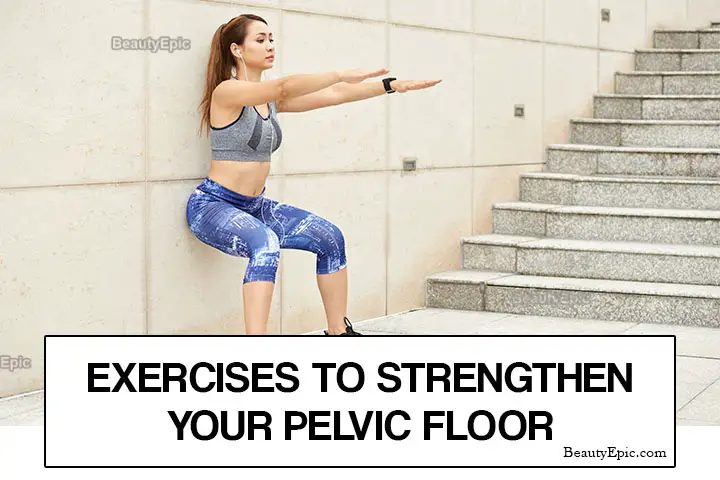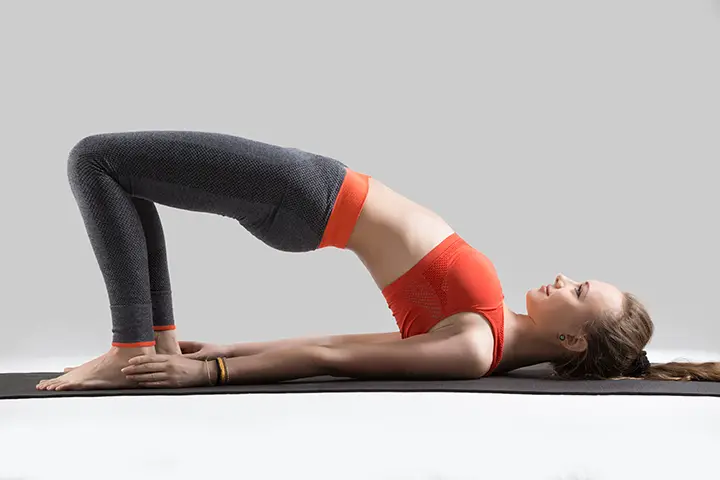
Important: This article is for informational purposes only. Please read our full disclaimer for more details.
Most of the body weight is obviously exerted on the pelvic floor. It’s the general body’s supporting platform that gives direction and strength to the tail bone. Hence there is need for this wall to be strengthened so that it can effectively serve its purposes affecting. It’s estimated that nearly 50% of the US citizens who visit the fitness centers are unable to lift a variety of weights while in a standing posture simply because they have a pelvic floor. However, such individuals can make everything possible simply because this article informs them about 6 best to strengthen their pelvic floor.
Article Contains
6 Best Moves to Strengthen Your Pelvic Floor
1. Bird Dog Exercise
How to do:
- Get on a plank position and let the knees and the toes to touch the floor.
- With the palms down on the floor, straighten them until the upper body attains the arm’s length.
- Lift the right arm off the ground and upwards but in a horizontal position so that it can be parallel to the ground.
- Again lift the left foot and straighten it backwards as you balance the rest of the body.
- Maintain this posture for a minute then fall back to the original position and shift the balancing organs.
How it Benefits: Tones the oblique muscles and abs.
2. Bridge
How to do:
- Lie on your back and keep the arms straight under your back.
- Bend the knees and let the feet sole to step on the floor.
- Take a deep breath then keep your face up with the head pinned to the floor.
- Start pushing the chest up and down and stop after several turns.
How it Benefits: Opens the chest. Increases the flexibility of the abdomen.
[ Read: Exercises for Arthritis ]
3. Wall Squat
How to do:
- Stand upright in front of a wall and face it. Raise the arms up and allow the palms to make contact with the wall at the highest point.
- Start dropping down to the floor slowly and rest for a while when the hips have attained the knees height.
How it Benefits: Increases flexibility of the joints.
[ Read: Best Inner-Thigh Exercises ]
4. Split Tabletop Exercise
How to do:
- Lie on a level surface with your back and keep the hands straight and down to the flow.
- Bend the knees and lift the legs up and horizontal to the floor. Open the knees slowly in opposite directions to the maximum level and hold on for a while.
How it Benefits: Strengthens the hamstrings, the core and the pelvic floor.
[ Read: Exercises to Reduce Belly Fat ]
5. Squats
How to do:
- Open your legs to attain the body’s width while standing upright and position your arms in a prayer pose but off the chest.
- Lower the body slowly down and hold on while at the core level. Move up slowly then down again to complete one turn.
How it Benefits: Boosts the core strength. Strengthens the lower body.
[ Read: Exercises For Lower Back Pain ]
6. Jumping Jacks

How to do:
Stand upright on a level surface with your legs close together and the arms freely suspended downwards. Spread your legs and lift your hands up to meet each other above the head then start jumping slowly then increase the pace.
How it Benefits: Strengthens and tones the leg muscles.
You can easily make your pelvic stronger in a short while by practicing these exercises regularly.
You Might Also Like:
- Is It Safe To Go Bowling While Pregnant?
- Exercise and Breastfeeding: Benefits And Tips To Keep In Mind
- 9 Simple Exercises to Get a Flat Stomach After Delivery
- 6 Best Exercises to Prevent Varicose Veins
- 5 Easy Exercises for Knee Arthritis to Ease Your Pain
- How to Burn More Calories While Walking?
- Best Lower Ab Exercises for Women
- 7 Best Creams For Sciatica Pain
- Ab Workouts for Women – 10 Best Moves for Flat Tummy
- The 8 Best Abs Exercises for Beginners
- 5 Simple Exercises to Strengthen Your Weak Ankles
Image:- Shutterstock






















